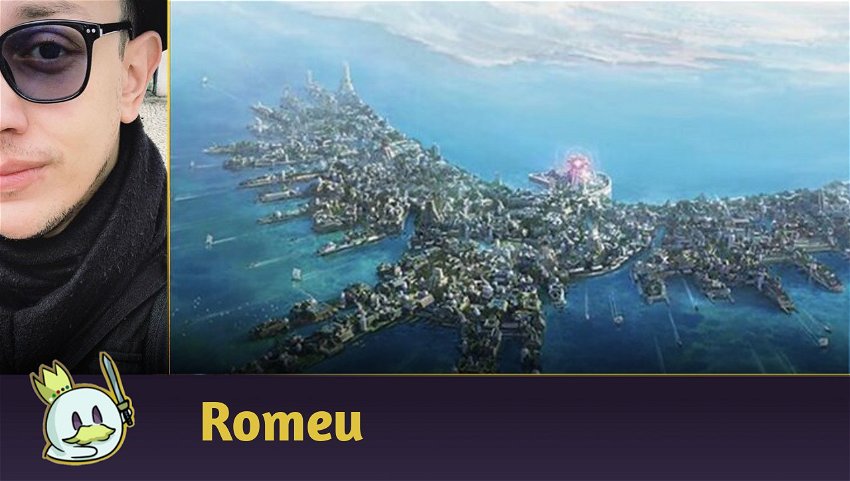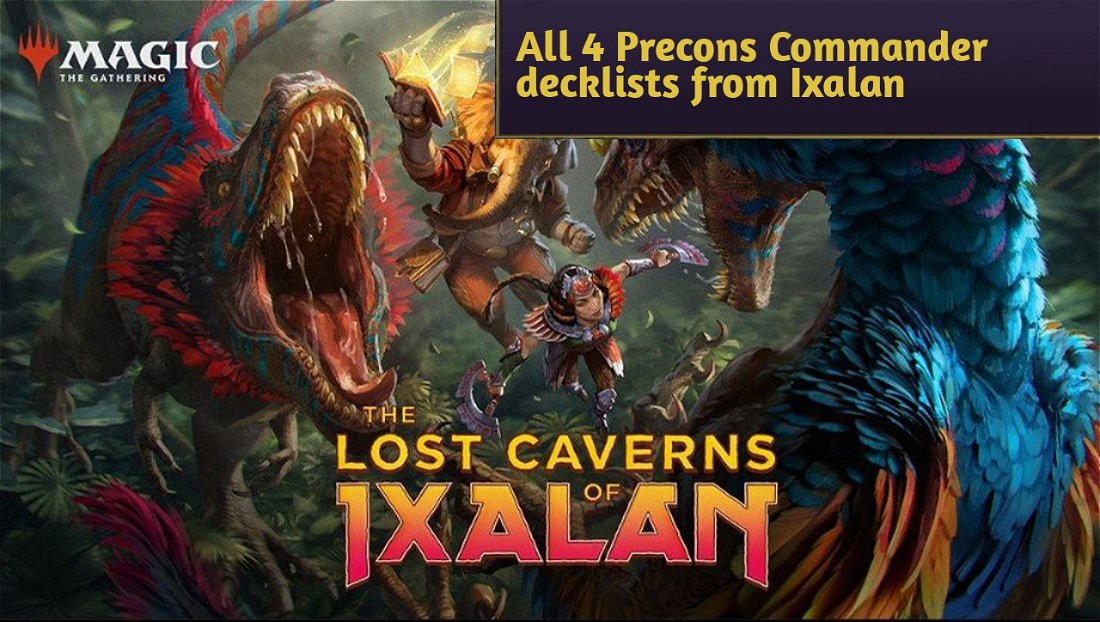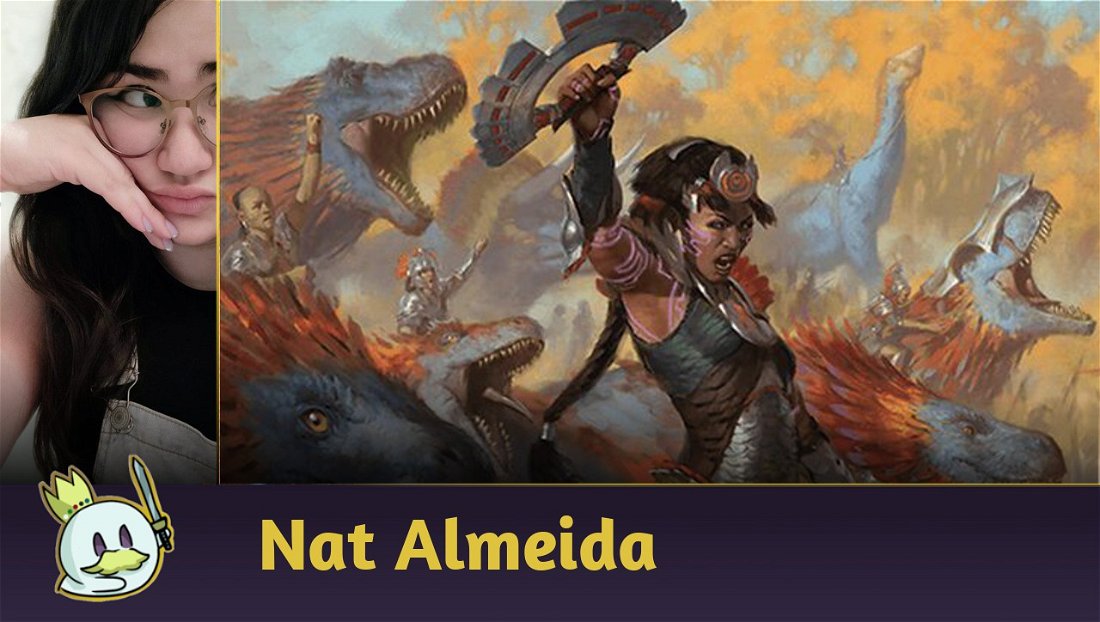With the end of the preview season for Lost Caverns of Ixalan scheduled for next Friday, we have already managed to establish an overview of the power level of the new Magic: The Gathering expansion, including the improvements it brings to the mana consistency of formats like Standard, by finishing the new land-creature cycle introduced in Wilds of Eldraine
.

In today's article, we evaluate the potential of these new lands for Standard and Pioneer, in addition to speculating which of them will be most present and in which archetypes they can stand out!
Allied Restless Lands - Review
The new manlands cycle follows the same logic as the cards introduced in Wilds of Eldraine: they all come into play tapped, and have a reasonable mana cost to become creatures with effects when they attack.
Some stand out a little more, but each of them seems to encompass a specific archetype that fits the color identity in which they fall.

Without a context, Restless Anchorage seems like the best card of the cycle: in addition to a lower cost to activate, the 

I have expectations that Restless Reef will see play because a 4/4 with Deathtouch is an efficient clock on empty boards, while also trading with problematic threats and/or stopping attacks from cards like Sheoldred, the Apocalypse.
Its mill ability is, today, a double-edged sword: in addition to working towards the consistency of mechanics such as Descend, Delirium or Delve, it also accelerates Reanimate strategies, such as the ones with The Cruelty of Gix to fetch Atraxa, Grand Unifier or, in Pioneer, Greasefang, Okiba Boss with Parhelion II.
As Restless Reef's attack trigger is mandatory, players will need to build lists that can benefit from its abilities, and/or avoid using it against archetypes where milling the opponent is beneficial to them.

For three mana for a 2/3 with Menace, Restless Vents is a decent option for 

Restless Ridgeline isn't a Raging Ravine, but it's close enough. Reckless Stormseeker is a creature that sees play in both Standard and Pioneer, and the 
Unfortunately, it doesn't trigger for itself, nor does it grant Haste to the target creature, but it does allow for some useful interactions with evasive threats.

Ultimately, Restless Prairie is a typical example of what 
Go-wide strategies welcome the inclusion, especially those that don't try to play so low that they are punished with lands that come into play tapped.
Allied Restless Lands in Standard
It is likely that all Restless Lands will find a spot in Standard, just like their predecessors. In attrition-oriented games, having another threat in topdeck wars, or the ability to threaten an additional attack or block greatly amplifies the range of plays and possibilities for decks in the format.

Restless Anchorage will be present in Azorius Soldiers, but perhaps not with four copies, as it still has aggressive openings that require untapped lands to work. The possibility of having another flying threat and still triggering an increase in power and/or filtering the top guarantees more consistency in long games.
Bant Control is another list capable of benefiting from this manland due to its low activation cost and evasive ability, as it has occasional trouble closing out the game, and having a flying clock is an excellent way to pull in some damage every turn.
Another archetype that should take advantage of the new land, and alongside Restless Reef, is Esper Midrange. I believe that the 

Restless Vents is a viable option for Rakdos Sacrifice, but it would be more beneficial for strategies that seek to use The Cruelty of Gix and other cards to reanimate bombs, as it is an enabler by itself. If Rakdos Midrange returns to Standard at some point (or some Grixis, Jund, or even Mardu variant), it is possible that this land will gain more space in the Metagame.
In the three-color versions, however, it competes with a few other lands that seem to stand out better in their respective decks: Restless Cottage and Restless Fortress work better to stabilize the game, while Restless Reef is a more efficient option in attrition games, or if we want to put cards into our graveyard.

Restless Ridgeline and Restless Prairie are more appropriate for proactive archetypes, with a relevant creature core. From the Selesnya versions (Enchantments, Humans, Toxic, Tokens and others) to the Naya Aggro and Naya Exile, which will gain more support with Quintorius Kand, the


Numbers, however, are a problem: Aggro decks don't want multiple copies of lands coming into play tapped, and in a more complex mana base in the three-color versions, players would need to make compromises about what amounts they want of each or whether it's even worth playing with multiple copies of them.
Allied Restless Lands on Pioneer
In Pioneer, like its predecessors, the new lands encounter an obstacle: the Adventures in the Forgotten Realms manlands are format staples, and the previous cycle found little or no space among the Metagame's main contenders.

This doesn't mean they don't have a place as one-of or even two-of in certain lists today, but we can't expect them to have the same impact or presence as older manlands, especially Celestial Colonnade and Raging Ravine, had on Modern during the format's early years.

Just like in Standard, Azorius Control may want a copy or two of Restless Anchorage in their lists due to the difficulty that the archetype has in closing games. Despite not being at the same efficiency as Hall of Storm Giants, its evasive body guarantees a small clock for a relatively low cost for its abilities, and it interacts well with Teferi, Hero of Dominaria, giving its controller something else to do with their mana during the main phase.

Restless Reef has a decent body for empty boards. Therefore, it can appear both in Dimir Control lists, where the attack trigger can be used to power Torrential Gearhulk and Dig Through Time, or in Rogues, where we can use it to pressure the opponent on both fronts.
Esper Greasefang lists can also benefit from the card, but it is an inefficient enabler in this strategy, as we might mill Parhelion II after the combat phase.

Restless Vents is worse than Hive of the Eye-Tyrant in every archetype it would fit into, thus making it the worst land of the cycle for Pioneer.

Restless Ridgeline competes with Lair of the Hydra, Den of the Bugbear, and even Mutavault in current Gruul Aggro lists. However, the land has an interesting synergy with Voldaren Thrillseeker, similar to what we see with Reckless Stormseeker, where we can increase the vampire's power and then sacrifice it to deal a high amount of damage.
I believe that this interaction causes the card to gain at least one slot in the maindeck of this strategy.

Restless Prairie is in an interesting position, where its direct competition is Mutavault in Selesnya Angels, and with Lair of the Hydra in Selesnya Company. In both cases, their biggest problem is the loss of speed that these archetypes have when running this land, in a Metagame where losing a turn has already been lethal for them.
Despite its usefulness in collaborating with go-wide strategies, Restless Prairie requires a very heavy mana investment, and the late-game of these strategies is almost non-existent, as most of the other competitors in the format can explode first, or guarantee a better late-game. Therefore, I don't see much of a future for the 
Conclusion
All new manlands have specific qualities that guarantee their place in Standard, but they compete directly with the Adventures in the Forgotten Realms land cycle in Pioneer, which are now staples in several decks and which do not pose as many risks of entering tapped in the first turns.
Despite being the first cycle of allied-color manlands since Worldwake, the new cards, for the most part, don't seem to impact Pioneer in the same way as their mono-colored predecessors, and this puts them in a position where we can expect an occasional copy, but not many of them on the lists due to the Metagame's demands.
Thanks for reading!














— Comments 0
, Reactions 1
Be the first to comment